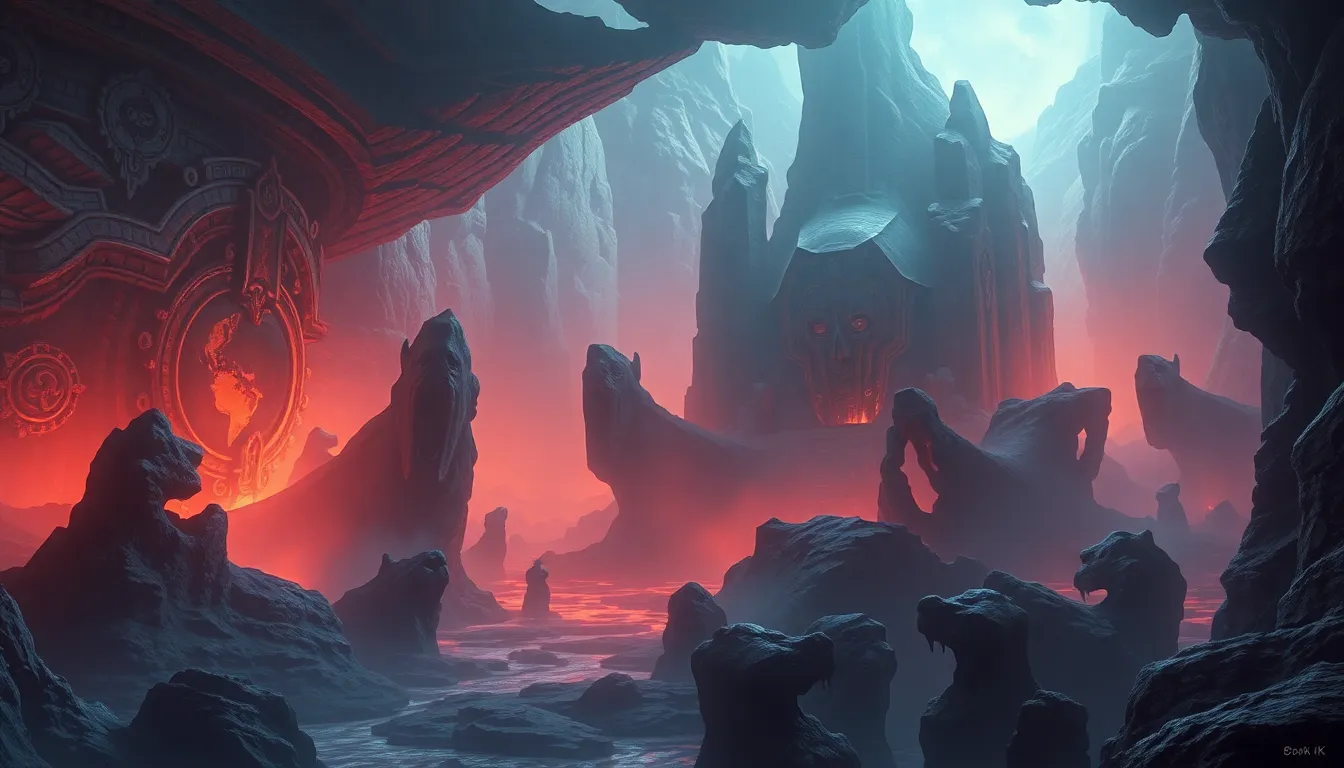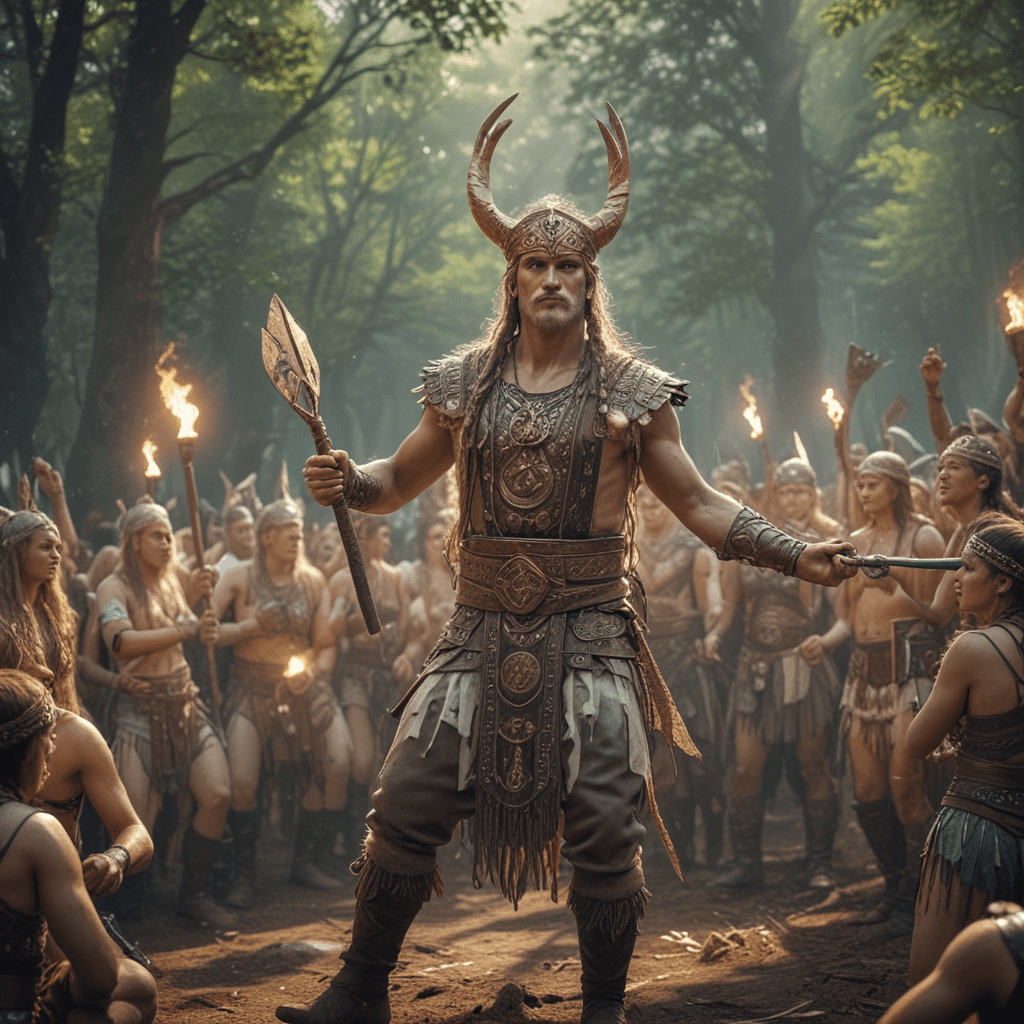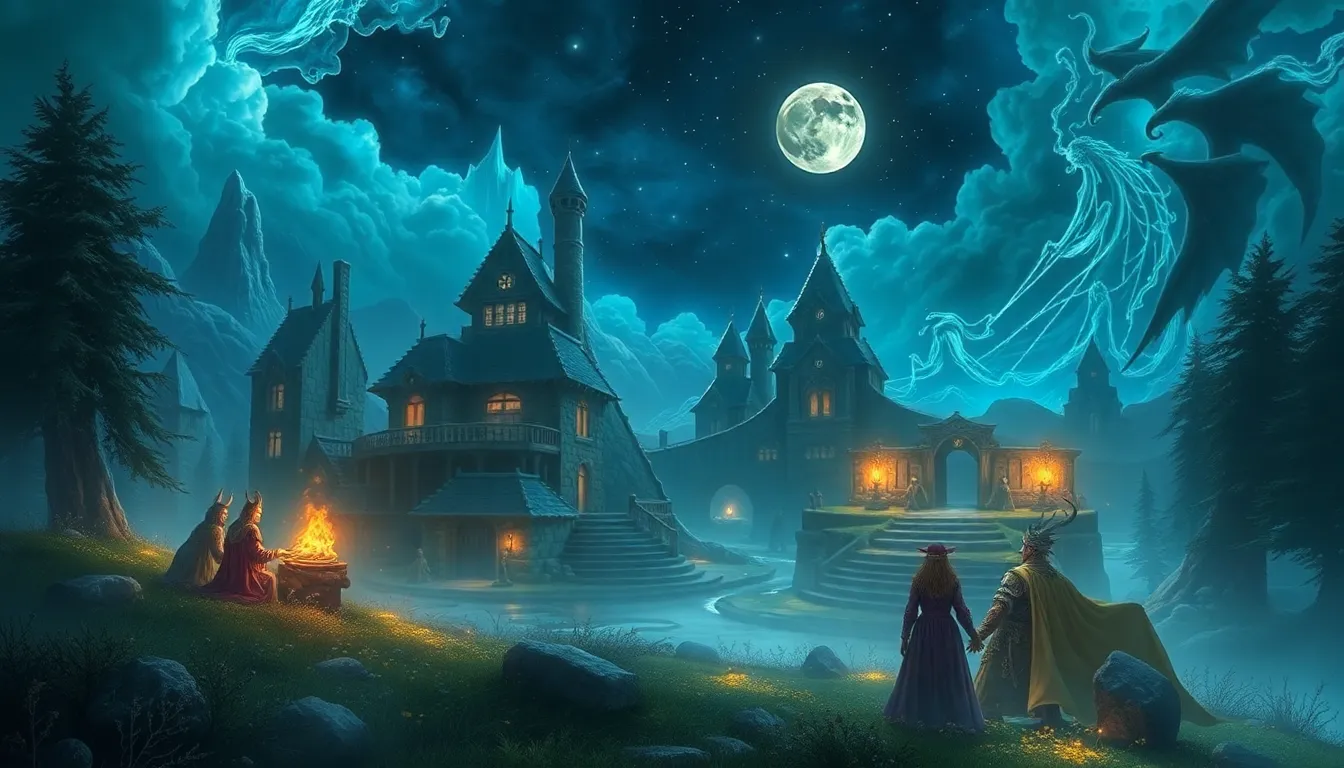The Serpent’s Retelling: Modern Adaptations and Interpretations of Jörmungandr’s Myth
I. Introduction
In Norse mythology, Jörmungandr, also known as the Midgard Serpent, is a colossal sea serpent that encircles the Earth. As one of the children of the trickster god Loki and the giantess Angerboda, Jörmungandr holds a significant place in the mythological narrative, particularly concerning the end of the world, or Ragnarök. Myths like that of Jörmungandr serve as crucial instruments of cultural storytelling, encapsulating the values, fears, and aspirations of the societies that create them.
This article aims to explore modern adaptations and interpretations of Jörmungandr’s myth, examining its presence in literature, film, video games, and visual art, as well as its cultural impact and reception in contemporary society.
II. The Origins of Jörmungandr: A Mythological Context
Jörmungandr plays a pivotal role in Norse cosmology, symbolizing the chaotic forces of nature and the balance of life and death. According to legend, he was cast into the ocean by Odin, where he grew so large that he could wrap himself around the Earth, biting his own tail.
Key myths involving Jörmungandr include:
- Ragnarök: The prophesied apocalypse where Jörmungandr fights Thor, leading to both their deaths.
- The fishing contest: A tale in which Thor attempts to catch Jörmungandr, showcasing the struggle between gods and giants.
The symbolism of Jörmungandr extends beyond mere physical representation; he embodies the cyclical nature of life and death, chaos and order, reflecting the complex relationship between humanity and nature.
III. Jörmungandr in Literature: From Ancient Texts to Modern Novels
Traditional sources like the Poetic Edda and Prose Edda provide rich narratives about Jörmungandr, depicting him as both a fearsome creature and a tragic figure doomed to fight the gods. These texts serve as the foundation for many modern retellings.
Contemporary novels have also drawn inspiration from Jörmungandr, with notable examples including:
- Neil Gaiman’s “Norse Mythology”: This retelling revitalizes the ancient tales, presenting Jörmungandr with depth and nuance.
- Rick Riordan’s “Magnus Chase” series: Here, Jörmungandr is woven into a modern adventure, appealing to younger audiences while maintaining mythological integrity.
Themes such as destiny, conflict, and the struggle between order and chaos are prevalent in these modern narratives, showcasing the timeless relevance of Jörmungandr’s story.
IV. Jörmungandr in Film and Television
Film adaptations have brought Jörmungandr to life in various ways, with notable portrayals including:
- Marvel Cinematic Universe: Jörmungandr, referred to as the Midgard Serpent, appears in Thor-related films, albeit with a more heroic twist.
Television series have also integrated Jörmungandr into their narratives:
- “Vikings”: The series references Norse myths, including Jörmungandr, portraying the complexities of Viking culture and their mythological beliefs.
- “American Gods”: Here, Jörmungandr represents the clash of old and new gods, emphasizing his role in contemporary society.
The visual representation of Jörmungandr varies from terrifying to majestic, reflecting the reinterpretation of the serpent’s character in modern storytelling.
V. Jörmungandr in Video Games: Interactive Storytelling
Video games have become a dynamic medium for exploring mythological narratives, including Jörmungandr. Notable examples include:
- “God of War”: Jörmungandr plays a crucial role in the storyline, serving as an ally to the protagonist, Kratos, and representing the complexity of his character.
- “Assassin’s Creed Valhalla”: The game incorporates Norse mythology, allowing players to engage with Jörmungandr’s narrative through quests and lore.
The impact of gameplay on mythological interpretation is profound, as players often make choices that influence the outcome of the story, providing a unique perspective on Jörmungandr’s myth. This interactivity fosters a deeper engagement with the narrative and encourages players to reflect on the themes of fate and choice.
VI. Artistic Representations: Jörmungandr in Visual Arts
In contemporary art, Jörmungandr has inspired various forms of artistic expression, including paintings, sculptures, and digital art. Artists draw on Norse mythology to create works that resonate with modern audiences.
Influences of Norse mythology on modern artists include:
- Creating visual narratives that reinterpret traditional myths.
- Exploring themes of chaos, nature, and the interplay between humanity and the divine.
The symbolism of Jörmungandr in visual storytelling often reflects the duality of destruction and creation, encapsulating the essence of the mythological serpent as both a terrifying force and a protector of the world.
VII. Cultural Impact and Reception of Jörmungandr Adaptations
Modern interpretations of Jörmungandr resonate with contemporary audiences, reflecting current societal fears and aspirations. The role of social media and fandom has been pivotal in shaping narratives surrounding the Midgard Serpent, fostering discussions and critiques that enrich the understanding of these adaptations.
Critiques of Jörmungandr’s portrayals often focus on:
- The accuracy of mythological representation.
- The depth of character development in adaptations.
These discussions highlight the importance of staying true to the essence of the myth while allowing for creative reinterpretation.
VIII. Conclusion
In summary, the myth of Jörmungandr continues to inspire a myriad of modern adaptations across various media, from literature to video games. The enduring legacy of Jörmungandr in contemporary storytelling speaks to the timeless nature of myths and their ability to evolve with society.
As we move forward, the future prospects for adaptations and interpretations of Norse mythology, particularly that of Jörmungandr, remain bright, promising new explorations of this complex and fascinating character.



